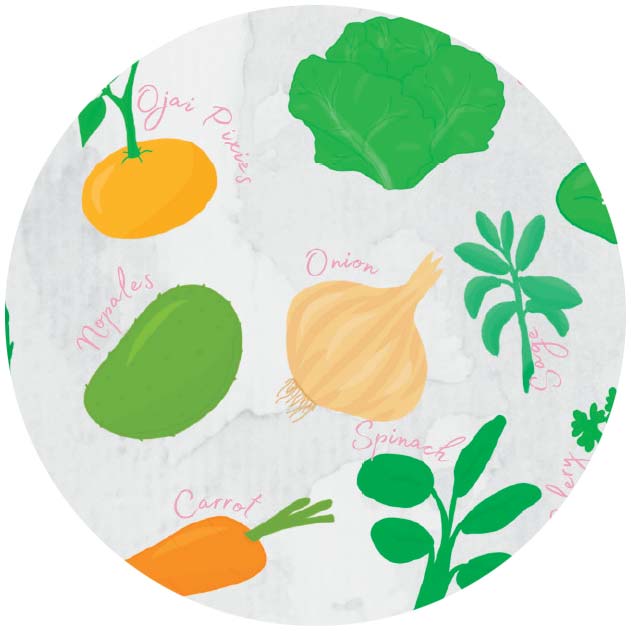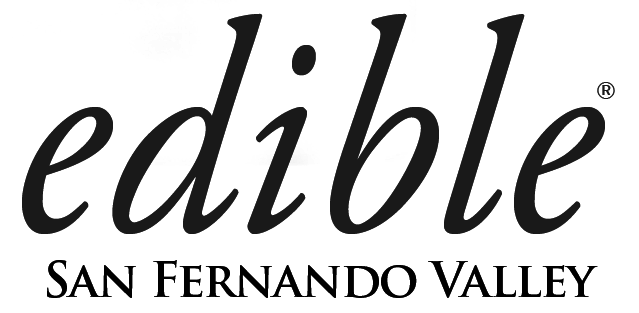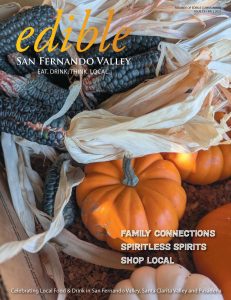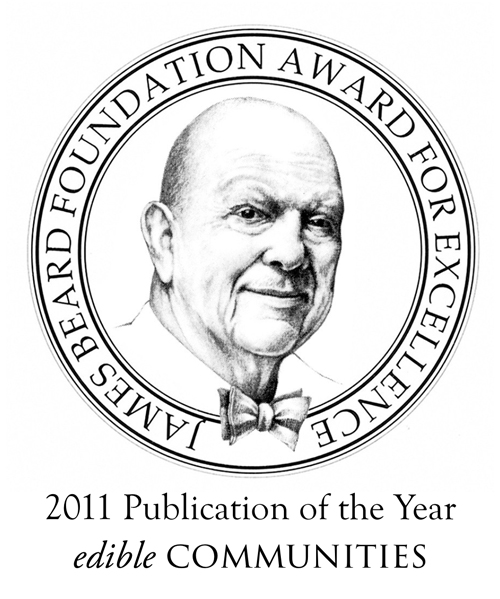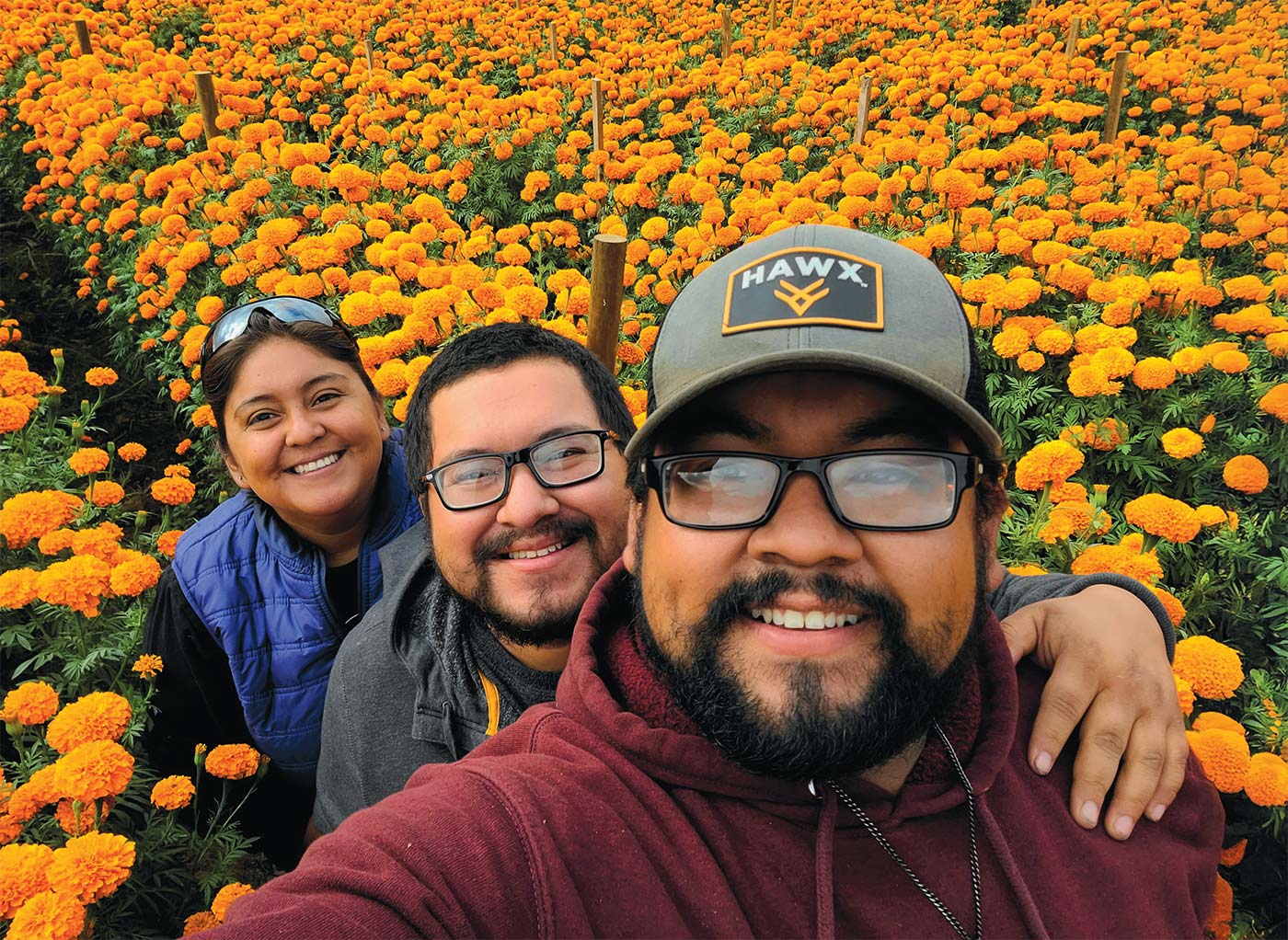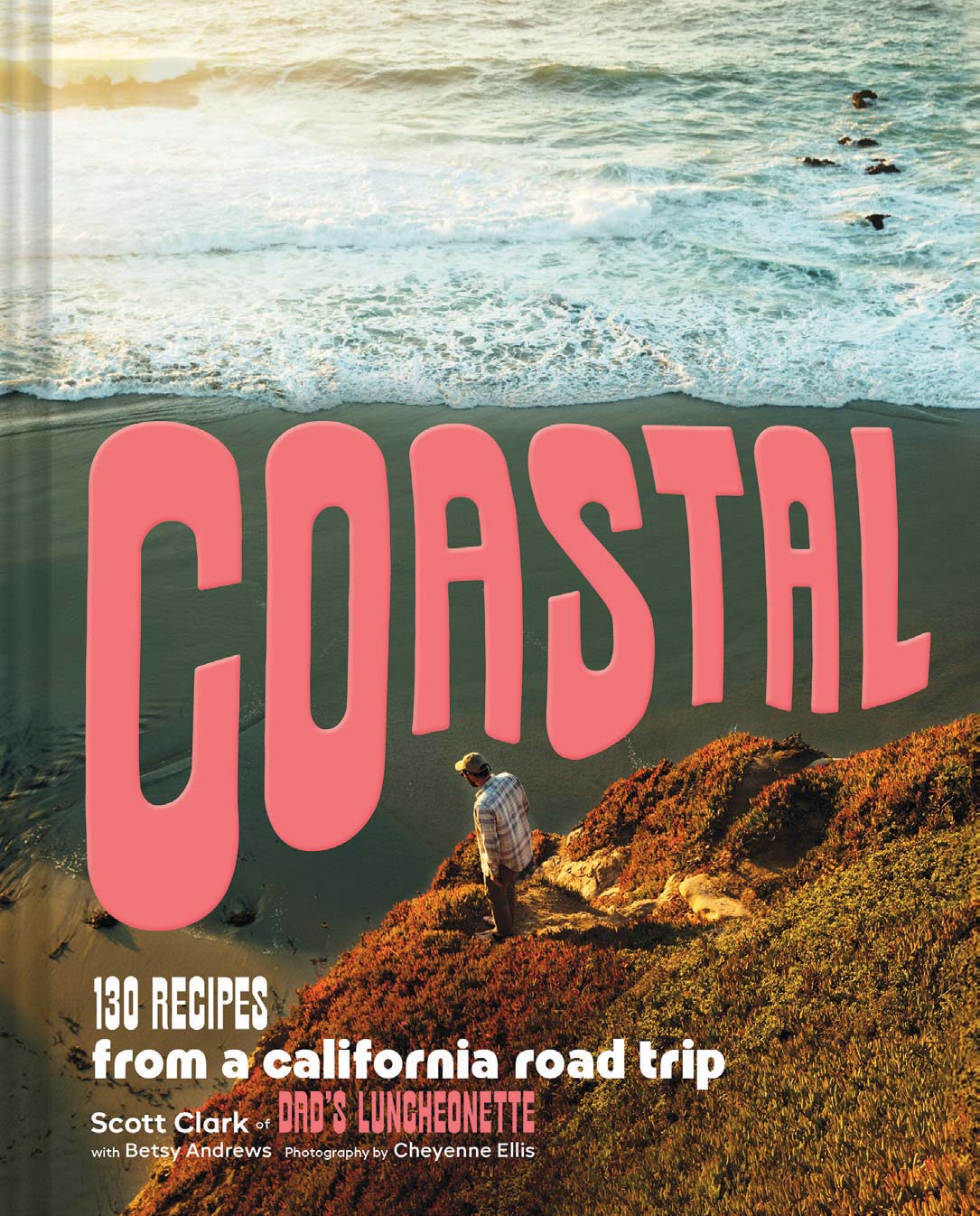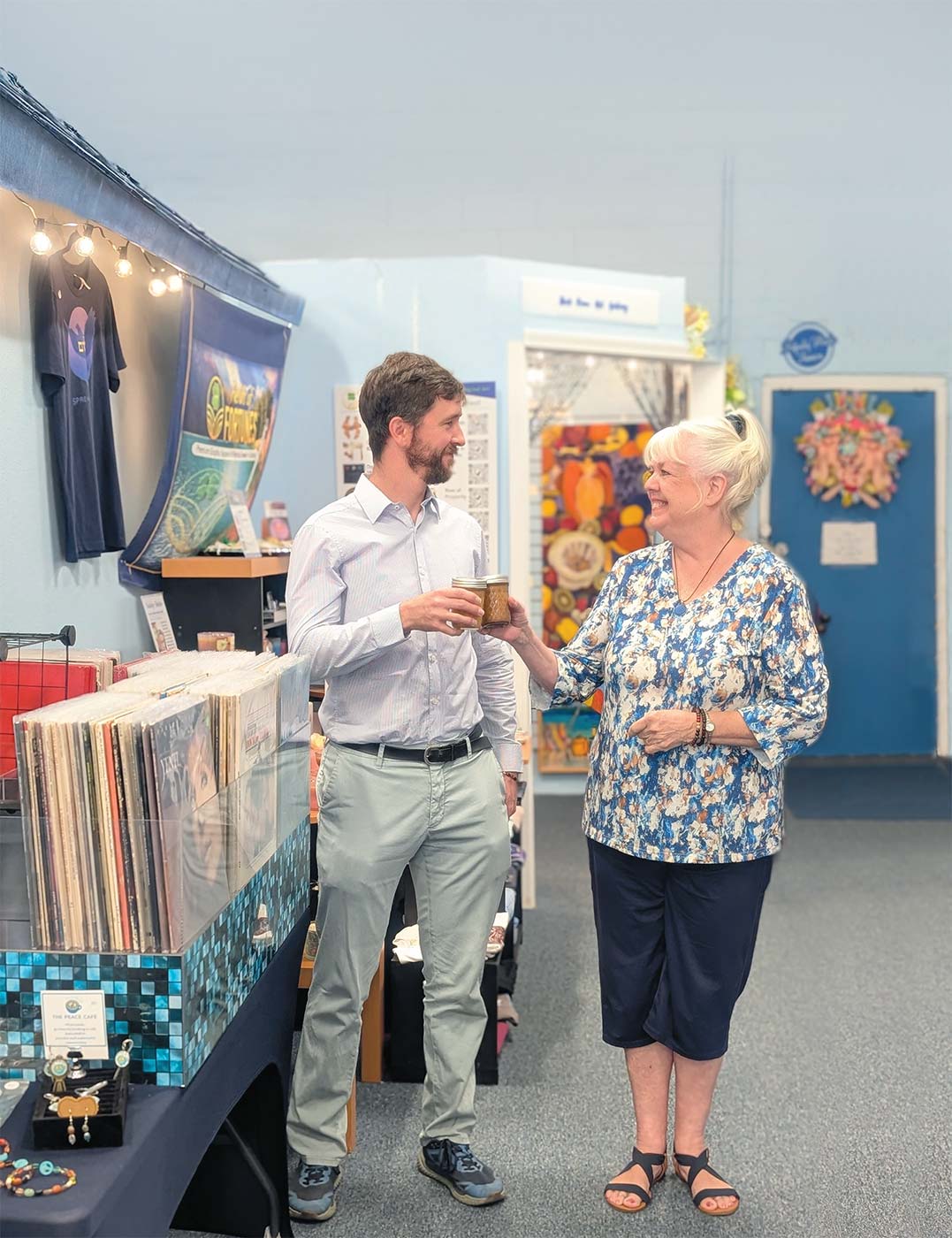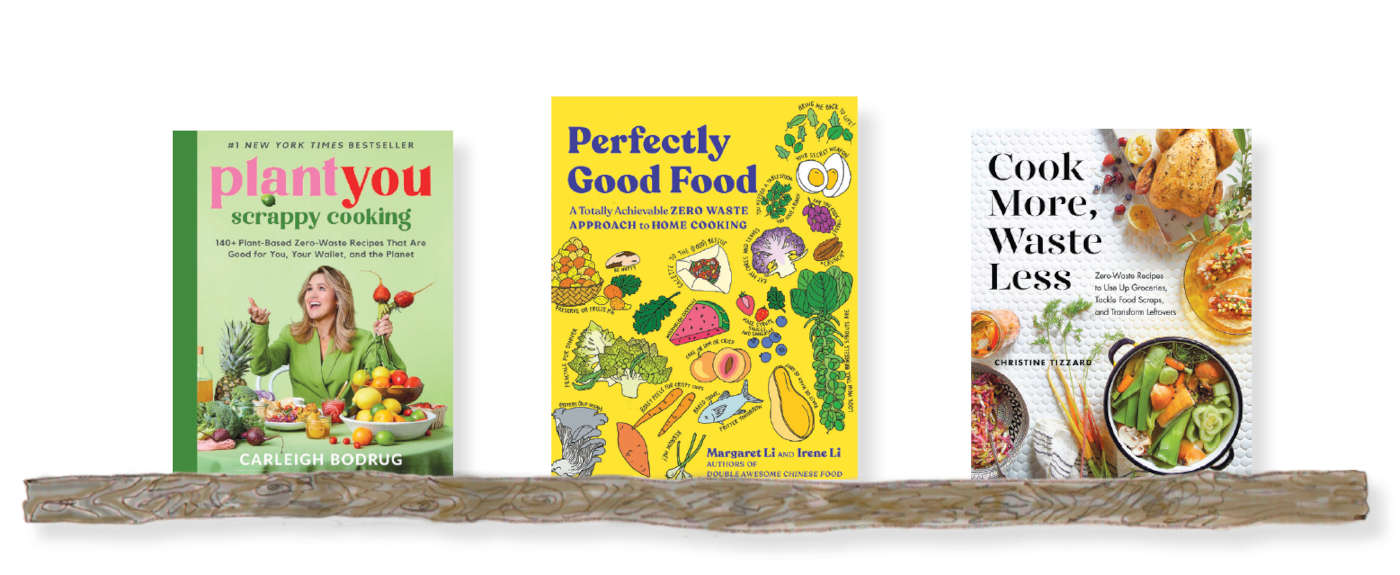
Zero-waste cooking has been a hot topic for a while (even longer if you’ve been an active Edible magazines reader). It’s an important subject to focus on as we strive to be good stewards of the land, and it has the bonus of saving money. Whether you’re an expert food-waste cook or a novice, checking out zero-waste cookbooks is a good way to learn and be inspired. These three cookbooks prove that zero waste doesn’t mean zero taste.
BEAUTIFULLY VEGAN
PlantYou: Scrappy Cooking by vegan food blogger Carleigh Bodrug (Hachette Books, 2024) includes “140+ plant-based, zero- waste recipes that are good for you, your wallet and the planet.”
Chapters cover breakfast through dessert with names like “Sustainable Sammies, Wraps & Salads,” “Eco Entrées” and “Preserves, Powders, Ferments & Other Fun Stuff.”
“This is a cookbook you can lean on when you’re wondering how to use up anything from radish tops to a can of chickpeas,” Bodrug writes.
She could have added that this is a book you turn to when you want to see craveworthy photos of finished dishes and each ingredient. The photos draw you in; the recipe seals the deal.
These vegan dishes would captivate omnivores, too. Bodrug gets bonus points for including nut-free, gluten-free and oil-free substitutions for every recipe, where possible. A guide to the calories, protein, fat and carbs of each recipe is another helpful tool for cooks.
The recipes are creative in their approach. Common Ground Granola, for example, includes spent coffee grounds or tea leaves. Two-Way “Bacon” Street uses banana peels to make vegan “bacon” with oyster mushrooms as an alternative. Strawberry Farro Salad includes strawberry tops. (Extra strawberry tops can be turned into vinegar with a subtle strawberry flavor and pink tint.)
She even incorporates leftover quinoa into truffles made with dates, cocoa powder and nut butter.
Under the “Preserves, Powders, Ferments & Other Fun Stuff” heading, Bodrug shares how to grow vegetables from food scraps, like carrot tops and green onions. It’s a fun science project to do with kids this summer. Best of all, you get to eat the results.
ENTHUSIASTIC, FRIENDLY COACHING
Perfectly Good Food: A Totally Achievable Zero Waste Approach to Home Cooking by Margaret Li and Irene Li (W. W. Norton & Company, 2023) is the cookbook I’d gift to newer cooks who are curious about a zerowaste lifestyle but are nervous about how to start. “Don’t Worry, We Got You!” would have been a worthy tagline for this book.
The authors are the enthusiastic coaches and friendly voices to help zero-waste-curious cooks dive in. They empower cooks to freestyle within the book’s 80 recipes and drop in 30 illustrations that are as inviting as they are informative.
A “Food Waste Feast Manifesto” helps cooks start their journey with seven truths to cast off limitations. One challenge is to “Be Brave and Be Curious,” meaning try new combinations and experiment with new flavors.
The book moves into a shopping basket filled with “Vegetables,” “Fruits” and “Proteins and Dairy.” To help you “Know What You Got,” ingredients are introduced with “Use-It-Up Ideas,” “Store It Right,” “Save For Later” and “You Can Still Eat It!”
Encouragement extends to the recipe names, too: “Fridge-Cleanout Fried Rice,” “Anything-You-Like Galette,” “Scrap Chili Oil,” and “Clear-Out-The-Pantry Granola.” The recipes have tips to “Switch It Up,” “Make It a Meal” and “Top It Off.”
The authors also provide ideas for giving new life to ingredients you might have tossed in the past. Turning wrinkly garlic into garlic confit is one idea.
Perfect for busy weekdays are the aptly named “Hero Recipes” that “rescue ingredients and make it so you can get dinner on the table with minimal drama and no extra trips to the store.”
QUOTE “The average American household of four wastes about $30 in food every week. Over the course of a year, that’s more than $1,500 in the trash.” —National Resources Defense Council, Save the Food (SaveTheFood.com)
REFERENCE GUIDE AND IDEA GENERATOR
Cook More, Waste Less: Zero-Waste Recipes to Use Up Groceries,Tackle Food Scraps, and Transform Leftovers by Christine Tizzard (Appetite by Random House, 2021) has over 100 approachable recipes with lots of how-to bonus information about zero-waste cooking and the recipes’ ingredients.
“If you haven’t guessed already, I’m a planner who lives for lists, charts, and diagrams— anything that makes my life easier,” writes Tizzard. Look through the cookbook and you see what she means.
There are icons (for example, “Fridge First” for recipes that use up the refrigerated ingredients you have on hand); Zero-Waste Tips, like “Buy the ugly produce”; and “Food 911” (really “Food 411”) tidbits of information about an ingredient. And there are notes on what leftover ingredients the recipe uses up and how long the finished dish can be stored.
Who wouldn’t love the Grain Bowl with Shrimp, and Lemon Dill Buttermilk Dressing that uses up leftover grains, cooked shrimp and buttermilk?
What really makes this cookbook valuable is that it takes seriously its role as a reference guide and idea generator. The book starts with “Zero-Waste Shopping Strategies” and setting up a zero-waste-friendly kitchen. It moves to comprehensive, pages- long charts for food storage and substitution ideas. They’re easy to follow and a reference I could see turning to often while mastering zero-waste cooking.
The cookbook is chock-full of zero-waste Q&A tips from her “food-waste-warrior friends: expert chefs, restaurateurs, sommeliers and even home and garden experts.”
The recipe chapters are divided into “Produce,” “Plant-Based Proteins,” animal proteins, “Pantry-Inspired Staples,” “Stocks and Condiments” and “Sweeter Stuff.” As an unexpected treat, this book offers recipes for face masks, cleaning products and even cat treats.
A KISS FOR THE KISMET COOKBOOK
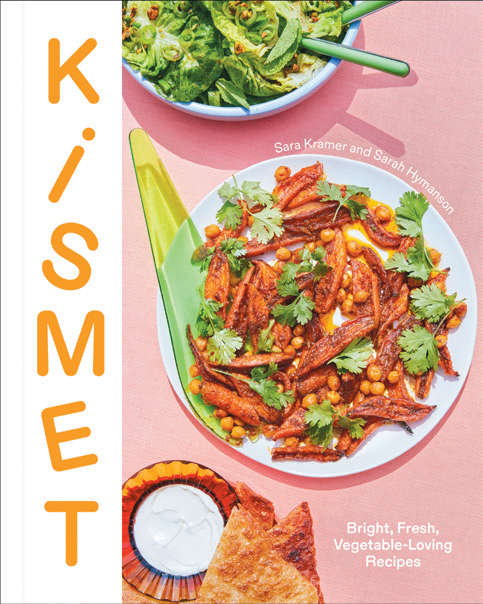
Dining at Kismet or Kismet Rotisserie, you may find yourself wondering how Sara Kramer and Sarah Hymanson, the chef-owners behind the LA-based restaurants, coax so much flavor from vegetables. You’re in luck because the duo recently released Kismet (Clarkson Potter, 2024), a cookbook with 100-plus recipes that broadly lean, but not topple, into Mediterranean and Middle Eastern cooking.
“Simple, but make it sparkle.” This declaration is among the cookbook’s list of “what we’re all about.” In five words, it captures the essence of Kismet’s cooking. As does “Lots of vegetables, a little meat.”
Take your time to get to know this book, from the intro to the index. In the first dozen or so pages, the talented powerhouses charm us with their stories and fun facts. For example, Hymanson (a Gemini) says spicy stuff, kitchen scissors and a steamer are among her favorite kitchen items. Kramer (an Aquarius), namechecks Calzuro clogs, fresh bay leaves and a spice grinder.
The recipes are organized into eight chapters that include “Salady,” “As Good Tomorrow as It Is Today,” “Eggy + Meaty” and ending with “Sweet Treats.” The dishes can be served any night of the week or to celebrate special occasions, notes the cookbook’s cover.
I took Broccoli with Pumpkin-Seed Jazz (a coarse spice-seed mixture) for a spin at a party of food lovers. For the recipe, blanch broccoli florets and cook in a cast-iron skillet until they have “good color;” smother them with the Jazz and a light vinaigrette. “Broccoli is usually so boring,” says a friend, “but this was delicious! Can I have the recipe?”
It was simple and it sparkled: Kramer and Hymanson at their word.
- Read about Kismet Rotisserie in Studio City in Edible San Fernando Valley’s Winter 2023 issue.
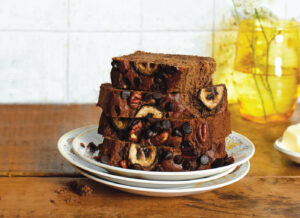
ABOUT THE CONTRIBUTOR
Sarene Wallace is the managing editor of Edible San Fernando Valley magazine. Sarene and Beth co-lead the Tasting Jerusalem Cooking Community, a global Facebook group that explores Middle Eastern cuisine.
